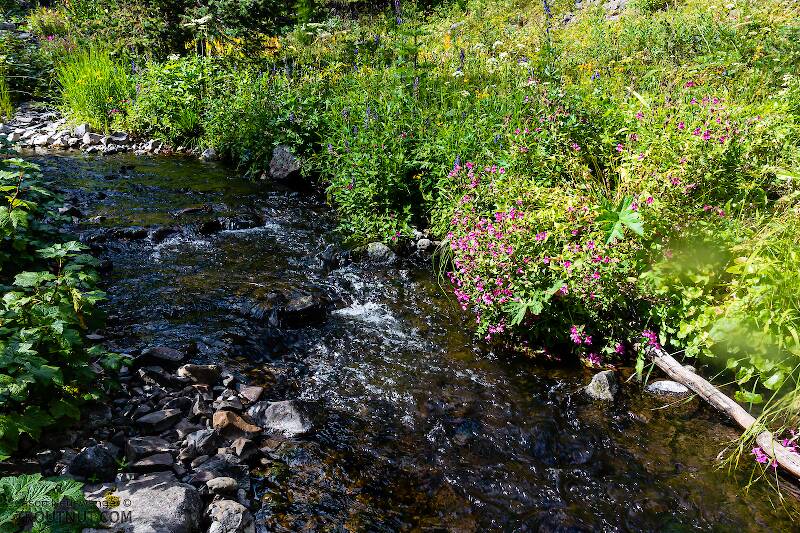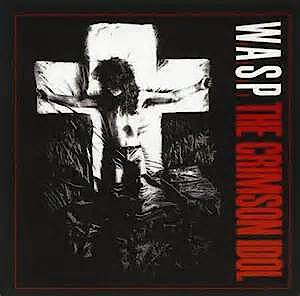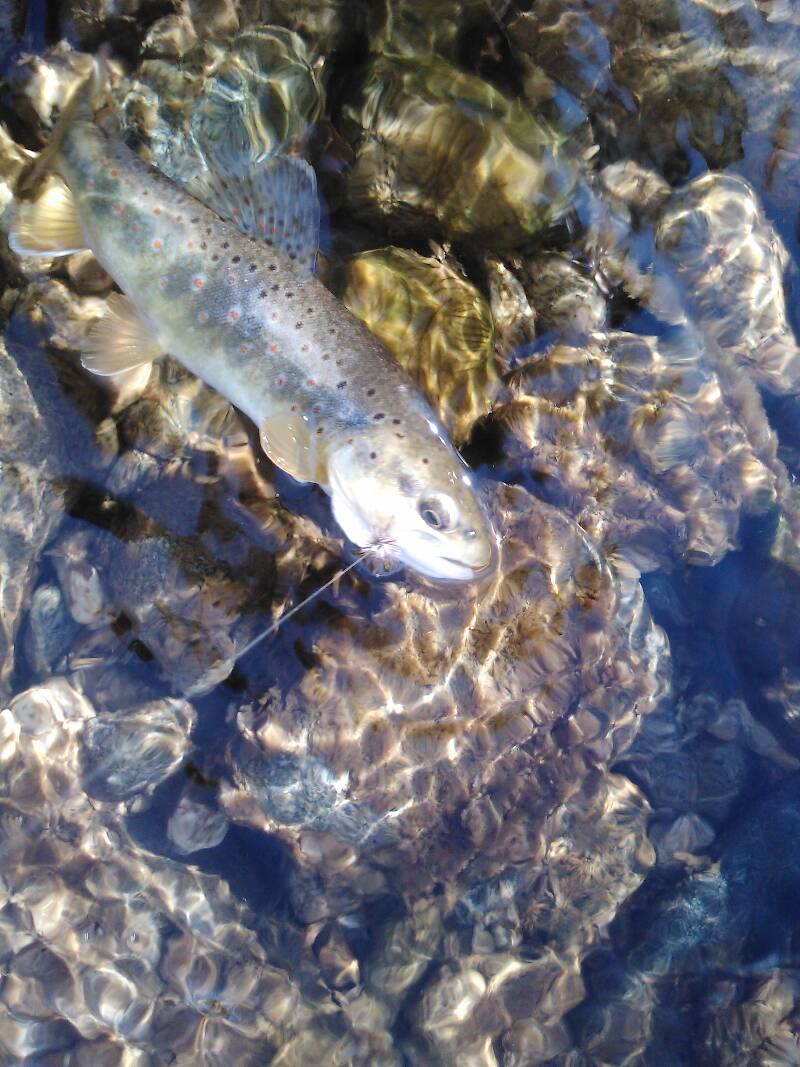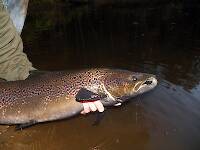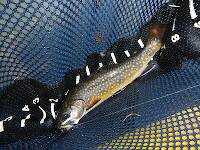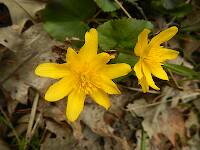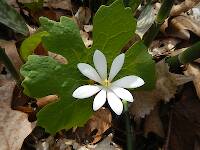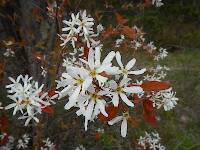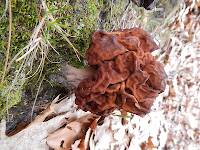
Hex Mayflies
Hexagenia limbata
The famous nocturnal Hex hatch of the Midwest (and a few other lucky locations) stirs to the surface mythically large brown trout that only touch streamers for the rest of the year.
Featured on the forum

This specimen keys pretty easily to Onocosmoecus, and it closely resembles a specimen from Alaska which caddis expert Dave Ruiter recognized as this genus. As with that specimen, the only species in the genus documented in this area is Onocosmoecus unicolor, but Dave suggested for that specimen that there might be multiple not-yet-distinguished species under the unicolor umbrella and it would be best to stick with the genus-level ID. I'm doing the same for this one.

Troutnut is a project started in 2003 by salmonid ecologist Jason "Troutnut" Neuswanger to help anglers and
fly tyers unabashedly embrace the entomological side of the sport. Learn more about Troutnut or
support the project for an enhanced experience here.
Adirman on Aug 6, 2018August 6th, 2018, 12:05 am EDT
Hey guys,
For the past month , been only fishing warm water stuff so definitely wanted to do some trout fishing this weekend. However, With the rain and high water levels on all major Catskill rivers and creeks , thought it be my best option to head for the tribs and try to get some brookies. Water was cold, clear and fresh today and although the brookies were small, they were willing willing And eager to take my # 14 Royal Wulff . Lots of fun and glad to see that a spot I hadn’t fished in many years still held my favorite kind of trout !! I was trying to get a pic of the biggest of the day(only a 7 incher) but he jumped outta my hands and clocked his head on a rock during the fall so l left him alone after ðŸ˜
AFB1949F-9485-4A2A-B3ED-5B22A6E1FC94.jpeg
AFB1949F-9485-4A2A-B3ED-5B22A6E1FC94.jpeg (127.85 KiB) Viewed 37 times
For the past month , been only fishing warm water stuff so definitely wanted to do some trout fishing this weekend. However, With the rain and high water levels on all major Catskill rivers and creeks , thought it be my best option to head for the tribs and try to get some brookies. Water was cold, clear and fresh today and although the brookies were small, they were willing willing And eager to take my # 14 Royal Wulff . Lots of fun and glad to see that a spot I hadn’t fished in many years still held my favorite kind of trout !! I was trying to get a pic of the biggest of the day(only a 7 incher) but he jumped outta my hands and clocked his head on a rock during the fall so l left him alone after ðŸ˜
AFB1949F-9485-4A2A-B3ED-5B22A6E1FC94.jpeg
AFB1949F-9485-4A2A-B3ED-5B22A6E1FC94.jpeg (127.85 KiB) Viewed 37 times
Iasgair on Aug 8, 2018August 8th, 2018, 10:48 am EDT
It's great to revisit a spot you haven't been to in a long time and see it's still productive as back when.
Brookies never get boring, and in my opinion during spawning time, probably the prettiest fish on this planet. I personally like the orange fins and the purple dots.
Good for you Adirman. Glad you had a great day on the tribs.
Brookies never get boring, and in my opinion during spawning time, probably the prettiest fish on this planet. I personally like the orange fins and the purple dots.
Good for you Adirman. Glad you had a great day on the tribs.
Adirman on Aug 8, 2018August 8th, 2018, 11:16 pm EDT
Yes, they absolutely are!!
Thank you my friend 😊
Thank you my friend 😊
Jmd123 on Aug 9, 2018August 9th, 2018, 8:52 am EDT
"Brookies never get boring, and in my opinion during spawning time, probably the prettiest fish on this planet. I personally like the orange fins and the purple dots."
I'll second that motion, gentlemen!! I have two brookie spots and anytime I can pop one over 9" is a thrill. They bend the 3-weight over good! And you'll only find them in the purest, cleanest, coldest waters.
I took my Field Biology class to one of my favorite spots this summer, the Pine River at Rearing Pond Road. Forget catching fish in a 20-foot seine in that stream! Two much current, too many obstructions, and this time too few fish herders! Nevertheless, I managed to catch two little sculpins in my D-net while collecting benthics. And man, what benthics!! Samples from a nice gravel riffle were squirming with critters, loads of blackfly larvae and caddisflies and mayfly nymphs and others, very rich and very dense. And cold - one of my students really had a hard time getting in!
I give a lecture on stream ecology in this class and then take them on two stream collecting trips, the first of which is the Whirlpool access on the Au Sable. This allows us to compare the warmwater lower Au Sable to a designated trout stream heavily populated with brookies and rainbows. I tell my students how this fits into the River Continuum Concept (look it up if you're not familiar with it - pretty interesting!) as a headwater stream, cold, shaded, few plants or algae but lots of debris input (leaves, twigs, wood, etc.) and dominated by shredders and collectors (benthic functional feeding groups), with strictly coldwater fishes such as trout and sculpins. The lower Au Sable is more of a midreach stream - warmer, more open, lots more algae and plants, more scrapers (scrape algae off surfaces) in the benthics, and warmer water fishes such as minnows, smallmouth bass, etc.
Another system of evaluation I teach them about is the Qualitative Habitat Evaluation Index (QHEI), from the Ohio EPA, for stream quality evaluation. It's a series of numerical scores on such aspects as instream habitat, pool/riffle structure, sinuosity, substrate type, riparian land use, etc. The maximum possible score is 100. Well, I tell my students that the Pine would probably be in the 75-80 or above range, same with the lower Au Sable.
An urban stream? Like 25 or below...
So yes, David, hit those tribs and catch those brookies! And think of the quality waters that you're fishing to catch those little gemstones too!
Tight lines with speckled fish on them!
Jonathon
P.S. Gave 4 (FOUR!) final exams today, two with live plants...it's all over now but the grading.
I'll second that motion, gentlemen!! I have two brookie spots and anytime I can pop one over 9" is a thrill. They bend the 3-weight over good! And you'll only find them in the purest, cleanest, coldest waters.
I took my Field Biology class to one of my favorite spots this summer, the Pine River at Rearing Pond Road. Forget catching fish in a 20-foot seine in that stream! Two much current, too many obstructions, and this time too few fish herders! Nevertheless, I managed to catch two little sculpins in my D-net while collecting benthics. And man, what benthics!! Samples from a nice gravel riffle were squirming with critters, loads of blackfly larvae and caddisflies and mayfly nymphs and others, very rich and very dense. And cold - one of my students really had a hard time getting in!
I give a lecture on stream ecology in this class and then take them on two stream collecting trips, the first of which is the Whirlpool access on the Au Sable. This allows us to compare the warmwater lower Au Sable to a designated trout stream heavily populated with brookies and rainbows. I tell my students how this fits into the River Continuum Concept (look it up if you're not familiar with it - pretty interesting!) as a headwater stream, cold, shaded, few plants or algae but lots of debris input (leaves, twigs, wood, etc.) and dominated by shredders and collectors (benthic functional feeding groups), with strictly coldwater fishes such as trout and sculpins. The lower Au Sable is more of a midreach stream - warmer, more open, lots more algae and plants, more scrapers (scrape algae off surfaces) in the benthics, and warmer water fishes such as minnows, smallmouth bass, etc.
Another system of evaluation I teach them about is the Qualitative Habitat Evaluation Index (QHEI), from the Ohio EPA, for stream quality evaluation. It's a series of numerical scores on such aspects as instream habitat, pool/riffle structure, sinuosity, substrate type, riparian land use, etc. The maximum possible score is 100. Well, I tell my students that the Pine would probably be in the 75-80 or above range, same with the lower Au Sable.
An urban stream? Like 25 or below...
So yes, David, hit those tribs and catch those brookies! And think of the quality waters that you're fishing to catch those little gemstones too!
Tight lines with speckled fish on them!
Jonathon
P.S. Gave 4 (FOUR!) final exams today, two with live plants...it's all over now but the grading.
No matter how big the one you just caught is, there's always a bigger one out there somewhere...
Quick Reply
Related Discussions
Topic
Replies
Last Reply
5
May 22, 2017
by Jmd123
by Jmd123
Re: DIY Photo-Microscope with a smart cell phone, iPod Touch, iPad (aka Smart-D-Scope)
In the Photography Board by LowBudget
In the Photography Board by LowBudget
1
Apr 1, 2014
by Entoman
by Entoman

